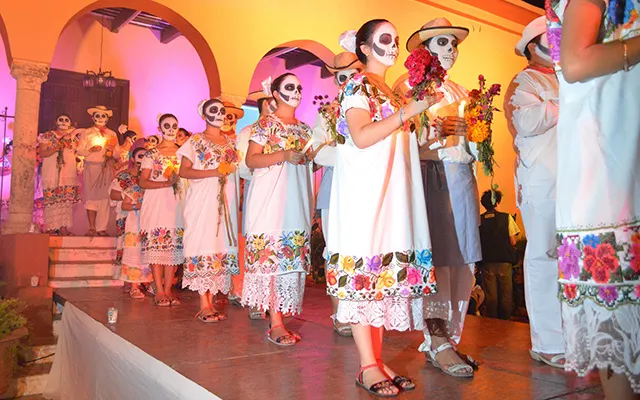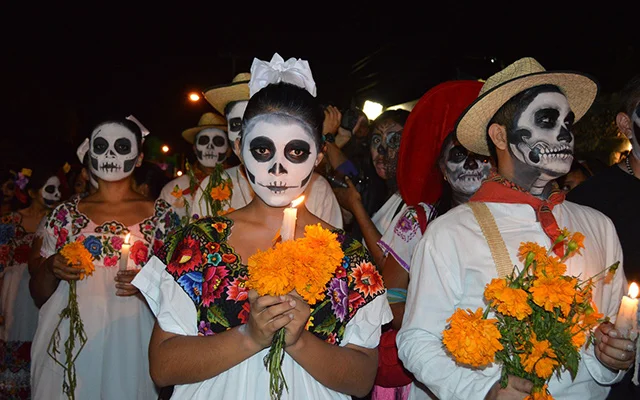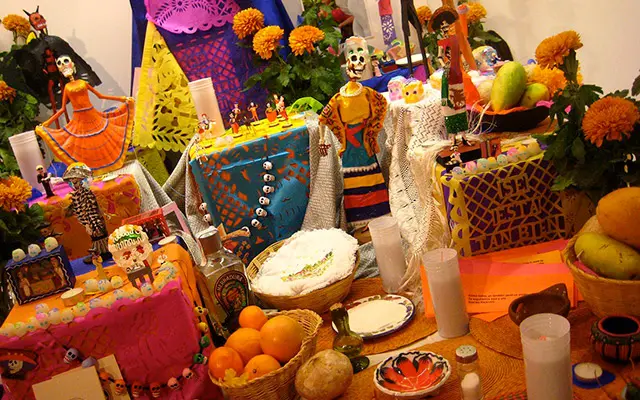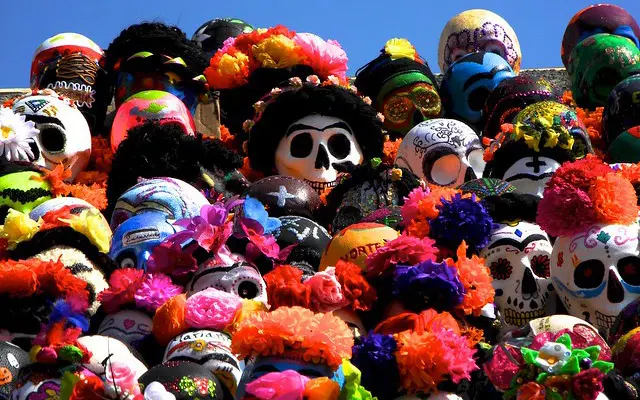Day of the Dead traditions, rituals & customs
Explore the history and the spiritual aspects of the holiday that is celebrated in cemeteries across the whole country of Mexico.
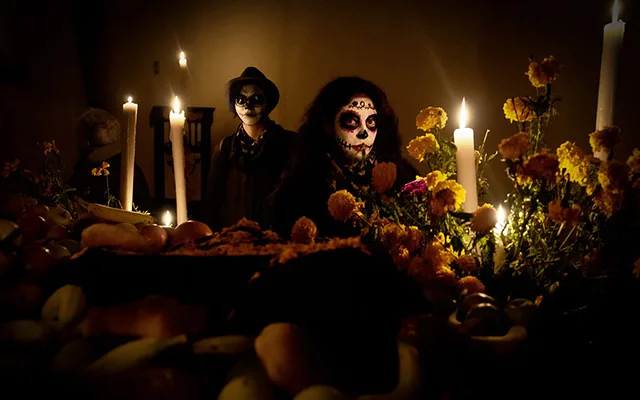
Major highlights of the Festival
The Day of the Dead is something more than a typical religious celebration for Mexicans. It is a festival with historical, cultural and spiritual connotations related to the deep fundamentals of Mexican society. Communities across the country celebrate the feast with devotion in a series of events that include various aspects.
It would not be an exaggeration to say that there are hundreds of elements habits and rites which are used and followed targeting to pay respect to the spirits of relatives and ancestors. Specific items reminding the deceased persons, decorations with direct implications to the incident of death, as well as ceremonies and festive meals, construct a spectacular background and give a folklore essence to the festival.
Some of the major characteristics of the feast are:
Altar (Ofrenda)
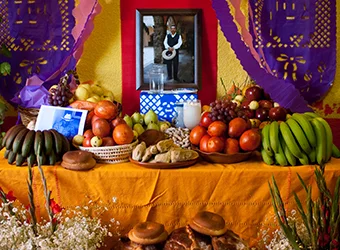
The central element of the celebration is the altar or "ofrenda" in Spanish.
Originated from the ancient Aztec practices which included food offerings to carved figurines (representations of the dead), the contemporary altars are built to welcome spirits back to the realm of the living.
The altars can be found in private homes, cemeteries, and churches, while they have a collection of offerings dedicated to the honored dead. A table of a multi-level surface covered by a bright colored table cloth can be used as an altar.
The highest step of the altar hosts a picture of Virgin Mary or a Saint's icon or just a Cross, while on the lower levels, photographs, personal belongings, as well as the favorite dishes and drinks of the departed are placed. Candles, water (as a refreshment for the long journey) and a typical pastry (pan de muerto-bread of the dead) are also parts of the altar setting.
For deceased children, it is common to place toys on the altar. Mexican marigold is the main decoration flower and the smoke from incense transmits praise and purifies the atmosphere around the altar.
Gravesites
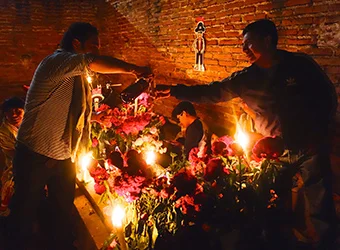
Based on the idea that the spirits, after their long journey from the underworld, return firstly to their graves, the gravesites are a significant point of the celebration.
Mexicans from all over the country visit the cemeteries in order to tidy and decorate the graves of the loved ones. Then the grave turns to become a small altar since many bring with them the typical offerings as food personal items of the dead, photographs and alcoholic drinks.
In some communities, it is a custom for families to spend the whole night in the cemetery, while others chose to have picnic supper, play music and drink talking about the best moments of their deceased when they were in life.
In some areas, people throw flower petals on the way from the cemeteries to their home. According to the common belief, those flower-petal paths help the spirits to find their way home.
Parades
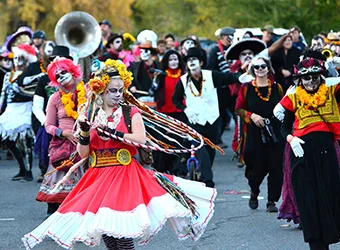
The Day of the Dead carries the message that celebrating dead leads to a true celebration of life. Among the vivid and colorful rituals, the parades are a significant part of the festival.
Actually some years ago, the Day of the Dead parades were taking place in specific regions and cities of the country. But lately and after the launching of the James Bond film Spectre in 2016, the parades started to become more popular in more areas.
Hundreds of people are dressed up with special costumes while they use makeup or masks that refers to skulls and skeletons. Marigold-decorated parade chariots have themes like the famous "La Calvera Catrina" or some other important Mexican cultural figures like singers (Chavela Vargas) and artists (Frida Kahlo).
Mexico City the last years hosts the “Grand Parade” which includes live music, bike rides and many other activities.
Regional characteristics
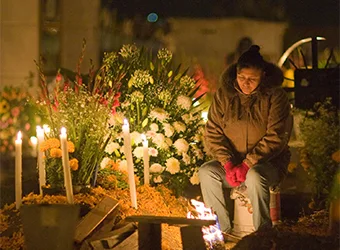
The Day of the Dead is widely celebrated across Mexico but the visitor can observe some differences at the scaling of the feasts, as well as on some specific practices that are followed.
Due to the historical restrictions of colonialism and Catholic Christianity, the ancient Aztec rites and practices were almost faded in the northern part of the country until the 20th century.
While in the central and south part, where the indigenous population was significantly larger, the customs were always more vivid and closer to the traditional rites.
Thus, in northern Mexico the holiday is celebrated mostly in family level, people go to the Mass and take care of the graves without having music and drinks at the cemeteries.
On the other hand, southern states like Oaxaca, Veracruz, Chiapas, and Yucatan celebrate the festival to the greatest extent with public events and other unique festivities.

UNESCO - Cultural Heritage of Humanity
There are not many countries around the world that worship and pay homage to death as in Mexico. The festivity includes vivid expressions of culture and traditions that stayed alive through the centuries and have been delivered from generation to generation.
As a result, in 2008, UNESCO (United Nations Educational, Scientific and Cultural Organization) listed the Day of Dead as an Intangible Cultural Heritage of Humanity.
This act pointed out the level of significance of the festival in Mexican culture and recognized the deep historical background of a custom related to indigenous Mesoamerican civilizations.
